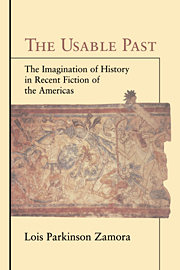Comparative Conclusions: Baroque New Worlds
Published online by Cambridge University Press: 01 September 2009
Summary
Behind every idea there are a thousand years of literature. I think you have to know as much as possible of where you are and how you are taking it further.
Gabriel García MárquezWILLIAM CARLOS WILLIAMS, in his 1939 essay “Against the Weather,” drew early attention to the American tendency to create inclusive structures. I have already cited his statement on the “power of mutation” required of New World writers to accommodate their multiple traditions. Williams would have understood this need for inclusive structures better than most, his name a literal cipher of his own converging heritages of Hispanic and Anglo-American cultures (his mother was Puerto Rican, his father Anglo-American). Surely his awareness of both traditions explains his fervent interest in the interactions of the New World's cultures and histories. On Europeans immigrating to the New World, Williams wrote: “It was liberty they needed, not so much liberty for freedom's sake but liberty to partake of, to be included in and to conserve. Liberty, in this sense, has the significance of inclusion rather than a breaking away.” Here he describes the American anxiety of origins as an appetite for inclusion, and the artist as the agent of its expression. For Williams, “the significance of inclusion” is not homogenization or unification but the countenancing of multiple, coexisting, conflictual, unfinished histories. Not peace but possibility.
- Type
- Chapter
- Information
- The Usable PastThe Imagination of History in Recent Fiction of the Americas, pp. 196 - 210Publisher: Cambridge University PressPrint publication year: 1997
- 31
- Cited by



